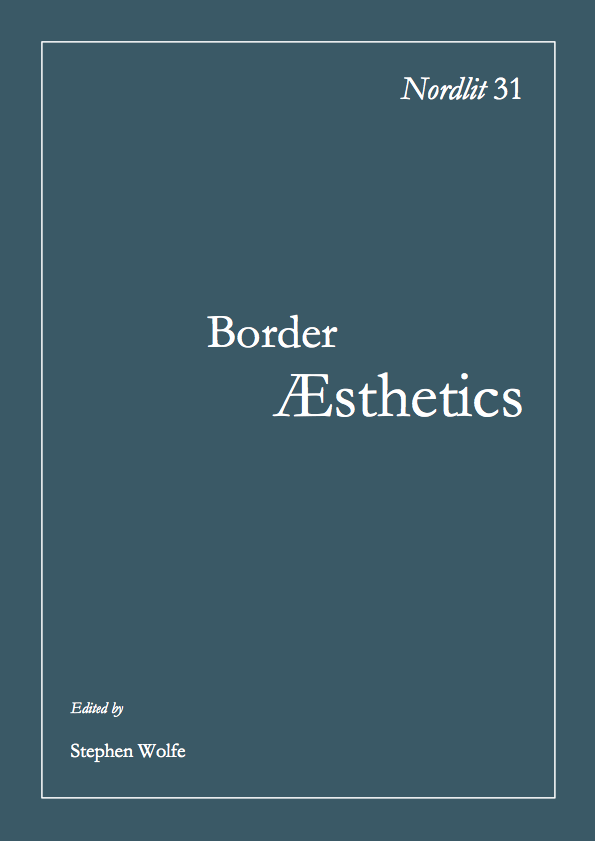No. 31 (2014): Border Æsthetics

Edited by Stephen Wolfe.
Nordlit 31 consists of essays that were first presented as papers at the ‘Border Æsthetics’ conference held at the University of Tromsø in September 2012. The conference built on continuing work at UiT—the ‘Border Poetics/Border Culture’ research group—and was the final conference of the ‘Border Æsthetics’ research project funded by the KULVER research programme of the Research Council of Norway and the University of Tromsø (2010–2013). The conference attracted fifty-three registered participants, including literary scholars, political geographers, historians, anthropologists, folklorists, linguists, media scholars, urban planners, architects; and students. Regional authors, performing artists, filmmakers, and artistic producers also took part in a special panel. […] Paper topics addressed the negotiation of borders—in photography, political satire, feature films, artistic happenings, literary fiction, poetry, theatre performances, local communities, urban spaces, architecture, magazines, and life stories. Papers also addressed questions about the æsthetic dimensions of: the visibility/invisibility of borders, culture borders and diaspora, waiting at borders, the borders of the subject, ecological borders, the economic crisis, and sovereignty. […] The aim of the conference was to ‘investigate how changing perceptions of borders relate to shifting æsthetic practices’. In so doing, the conference drew upon two guiding observations that inform any notion of a ‘border æsthetics’, these being [i] that æsthetic theories and practices regularly invoke and engage with notions of the border; and [ii] that borders are in turn capable of producing æsthetic effects and can themselves be conceived of as æsthetic objects. Indeed, one of the principal goals of the project, the conference, and of some of the essays that appear here are to establish a new ‘æsthetics of space/place and location’. It is of a kind likely to be required when studying divergent groups, objects, values and activities that inhabit and pass through border zones. […] Central to a number of the essays is an emergent and not fully-defined term in border studies, the ‘borderscape’—a wide material and virtual field constituted by ‘re/de/bordering’ processes and æsthetic representations of the border; used to map the relations of borders to power, resistance, connection, and reformulation. The ‘borderscape’ with its suggestion of a topography defined through perspective connects power directly to visibility in a way discussed in recent theories of æsthetics (see, for example, Rancière 2013 [2004]). Have a pleasant read.
Rancière, Jacques. 2013 [2004]. The Politics of Æsthetics: The Distribution of the Sensible. Translated by Gabriel Rockhill. Revised edition. London/New York: Bloomsbury.
Published:
2014-07-25




